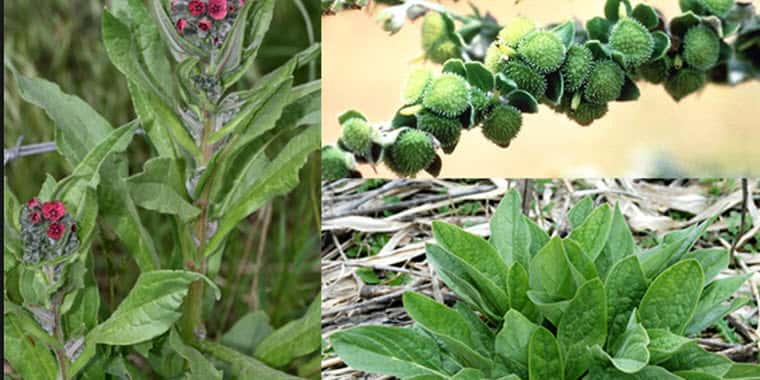A University of Wyoming educator is warning about poisonous plants in pastures this late summer and early fall.
The species of poisonous plants posing danger can change as pastures move through the seasons, said Brian Sebade, based in Albany County and serving southeast Wyoming.
“Livestock stand a greater chance of becoming poisoned by seeking out areas of green forage with higher palatability, such as sub-irrigated pastures or riparian areas, or the few green plants left in dry pastures and upland sites,” he said.
Poisonous plants to watch for late summer/early fall include:
* In wet areas with moisture present in the top layer of soil and subsoil: water hemlock (Cicuta douglasii), arrow grass (Triglochin maritima), and horsetail (Equisetum spp.).
* In soils with some subsoil moisture at lower elevations: hounds tongue (Cynoglossum officinale), poison hemlock (Conium maculatum), hemp dogbane (Apocynum cannabinum), chokecherry (prunus virginiana), and Russian knapweed (Rhaponticum repens).
* In soils with some subsoil moisture at higher elevations: bracken fern (Pteridium aquilinum), tall larkspur (Delphinium occidentale), and orange sneezeweed (Hymenoxys hoopesii).
* In dry or upland sites with very little or no moisture in the subsoil of concern: greasewood (sarcobatus vermiculatus), halogeton (Halogeton glomeratus), and nightshades (Solanum spp.).
Symptoms of fall poisonous plants may be slower to appear compared to spring poisonous plants, Sebade said.
For example, hounds tongue is responsible for liver damage in cattle and horses. In the fall, these symptoms may not occur right away like that of some spring poisonous plants, he said.
Other plants, such as chokecherry, grow during the spring and early fall, but the leaves become toxic once damaged or stressed. The later part of the growing season is a prime time for livestock to graze these green leaves that may be under water stress or damage from grazing earlier in the year, he said.
Green, poisonous plants that are the only option for livestock is another common problem.
Plants such as water hemlock may be one of only a few green and succulent plants in a pasture. Livestock with limited access to highly palatable plants might be more willing to try a poisonous plant.
“Good grazing practices and understanding the good and bad plants in a pasture while making sure there is ample forage available for livestock is imperative,” said Sebade.
Sebade said bulletin No. 415 from the U.S. Department of Agriculture can help producers learn the types of symptoms to expect, where plants tend to grow and what these plants look like. It is available at bit.ly/killerplantID.
Educators at University of Wyoming Extension offices can help identify species. A list of offices and contact information is at www.uwyo.edu/uwe/county.
Source: University of Wyoming Extension


